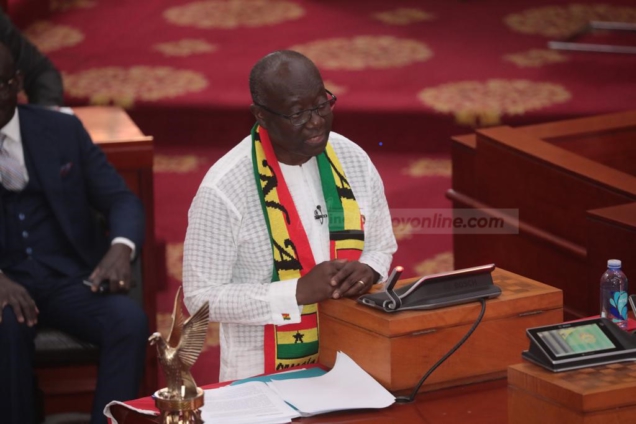Under the new proposal, the government is offering an upward adjustment of the principal by 15% right from the start. So, for example, if you hold a bond with a face value of GHS 1,000 today which matures in 2027, the new bond gives you GHS1,150 right from the start.
The government would pay an average coupon rate of 8.4% per annum and an additional 10% cash payment every year.
In 2023, the government would pay 5% out of the 8.4% coupon rate. The other 3.4% is added to the principal of GHS 1, 150 which comes to GHS 1,189.1 at the end of 2023.
In 2024, the government pays 5% on the capitalized principal of GHS 1,189.1 and the remaining 3.4% is capitalized to send the new principal to GHS 1,229.53 at the end of 2024.
In 2025, government now pays 8.4% on GHS 1,229.53. This remains the same for 2026 and 2027.
In terms of the cash flow implications, this means you will receive coupons of GHS157.5, GHS159.46, GHS203.28, GHS203. 28, and GHS203.28 in 2023, 2024, 2025, 2026 and 2027 respectively. In 2027, you will also receive a principal of GHS1,229. 53
In comparison, the old bonds at an average coupon rate of 18.5% will pay a coupon of GHS185 every year and a principal of GHS 1,000 in 2027.
If you discount these cash flows using the 18.5% prevailing on the old bonds, the present value for the future streams of cash flows under the old bonds gives you GHS 1,000 just as your face value today. This means NPV is zero. But if you discount the future cash flows under the new offer at the same 18.5%, you get a positive NPV of GHS85. This means the new bonds are offering a return of more than 18.5%. In fact, around 21% per annum.

I must mention, however, that the two rates of return (under the old and the new) are below the current inflation rate, meaning that the real return is actually negative for both. But the new one is better because it minimizes the negative returns.
If you stick to the old bonds, you earn an average of 18.5% per annum till maturity. It will not change. With the new bond, the return is slightly higher than 20% (About 21%).
I must also add that from the cash flows, it means that the government is pushing most of the payments to the next government (NPP/NDC) in 2025 and beyond. If NPP wins, they will continue with their creation and if NDC wins, they will inherit a huge cash outflow burden. But these arguments are for the politicians to make.
Latest Stories
-
Thousands attend funeral of Malian star Amadou Bagayoko
30 seconds -
Mahama orders full action on Trump tariffs – Deputy Trade Minister reveals
2 hours -
US Ambassador stunned by 10% tariff on cocoa – Deputy Trade Minister
2 hours -
British woman in Netflix’s Con Mum charged in Singapore
3 hours -
Algeria blocks flights from Mali after drone shot down
3 hours -
Apple’s encryption row with UK should not be secret, court rules
3 hours -
US defends tariffs on remote island of penguins and seals
4 hours -
Coral Paints launches ‘Women in Colour’ programme to empower women in the paint industry
4 hours -
Madonna and Elton John bury hatchet after lip-sync feud
4 hours -
Daily Insight for CEOs: Driving a culture of accountability across the organisation
4 hours -
Hitz FM and JoySports to launch 2025 Rep Ur Jersey Tuesday, April 8
4 hours -
Businesses must act fast to mitigate US trade tariff hike – Dr Spio-Garbrah
4 hours -
Trump threatens new 50% tariffs on China
4 hours -
Billionaire Trump backer warns of ‘economic nuclear winter’ over tariffs
4 hours -
GRA exceeds revenue target in quarter one, records GH¢41bn
5 hours

